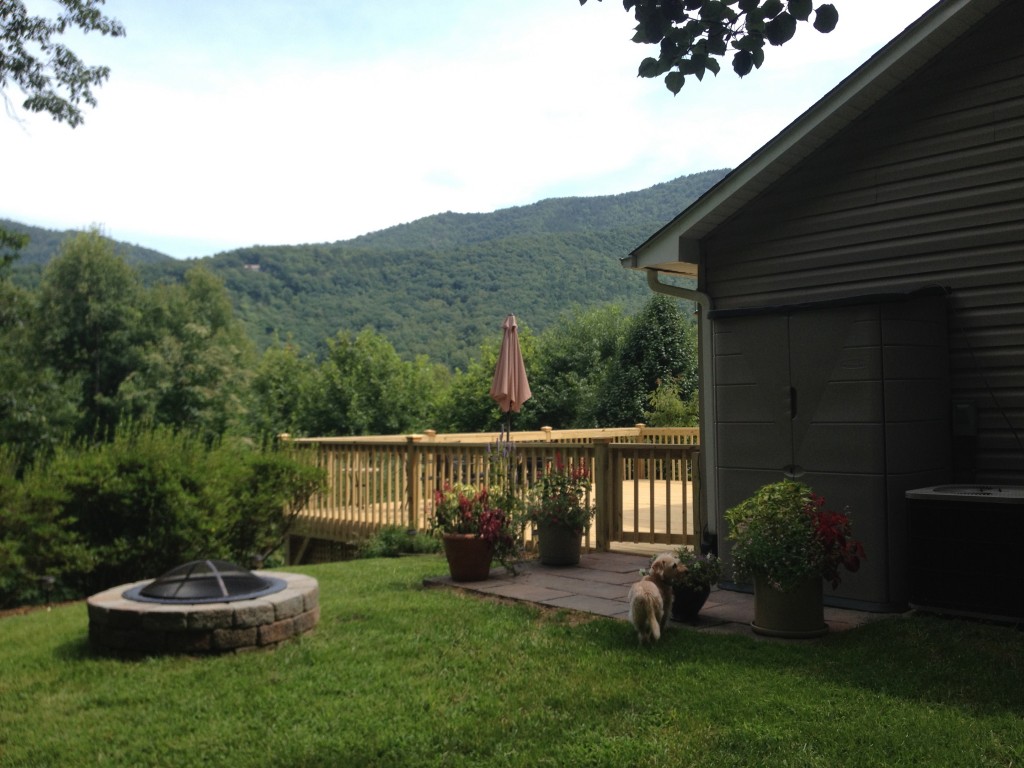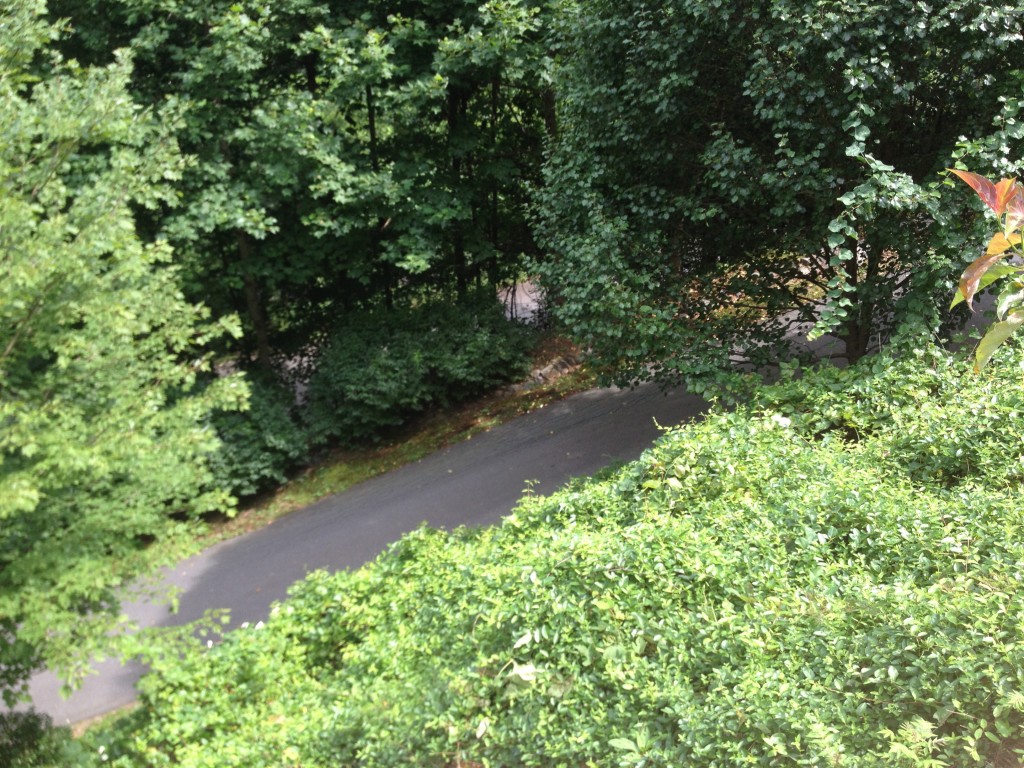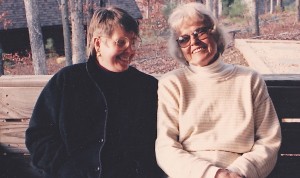 I’m on vacation in the spectacular mountains of North Carolina, less than five minutes from my daughter, her partner and my grandkids. I’m staying in a cute, little cottage tucked into the side of a mountain, with gorgeous views. Though there are houses nearby, I can’t see many lights after dark. We are way up in the trees. When the cicadas and tree frogs start their evening cacophony, it’s more than raucous. By morning they’re done and an early bird chorus takes over. This morning as I walked the dogs down our steep driveway to our twisty road, I heard the song of wood thrushes and the drumming of woodpeckers. It’s heavenly and a great place to get some writing done.
I’m on vacation in the spectacular mountains of North Carolina, less than five minutes from my daughter, her partner and my grandkids. I’m staying in a cute, little cottage tucked into the side of a mountain, with gorgeous views. Though there are houses nearby, I can’t see many lights after dark. We are way up in the trees. When the cicadas and tree frogs start their evening cacophony, it’s more than raucous. By morning they’re done and an early bird chorus takes over. This morning as I walked the dogs down our steep driveway to our twisty road, I heard the song of wood thrushes and the drumming of woodpeckers. It’s heavenly and a great place to get some writing done.
A few weeks ago I took some down time and made a trip with my theatre-obsessed husband, to the Contemporary American Theater Festival, in Shepherdstown, West Virginia. We saw five plays, sat in on a playwright’s roundtable, and ate wonderful food, all in four days time.
My favorite show of the weekend was a new play, Uncanny Valley, by Thomas Gibbons, an award winning playwright from Philadelphia. The term “uncanny valley,” is a well-known idea in the field of robotics, artificial consciousness and computer animation. Since my last full post here was about work being done to create robots that can be caretakers to the aging, writing about this show seemed a perfect follow up to that post.
Gibbons got the idea for his play while reading a National Geographic article about the LifeNaut Group, in Vermont, who are investigating the possibility of downloading human consciousness into artificial beings, so that humans can extend their life span, by perhaps two hundred years.
It sounds pretty freaky to me. I have no want or need to hang around for that long. Sure, I’d like to see my grandkids grow into young adults, but I’m not keen on the idea of seeing what else might arise long-term, as the climate continues to change and the wars that seem unending, continue to take up headline space. On the other hand, this kind of research might lead to making those steel and plastic robots now being tested as caretakers in Japan, into huggable beings that remind us of our favorite relatives when we become incapable of caring for ourselves. Wouldn’t holding a hand that feels warm and soft, be preferable to one that is cold, hard, and so obviously artificial?
In the play, Uncanny Valley, Claire, a scientist, is played by Barbara Kingsley. Her field of study is artificial consciousness. She is preparing robot, Julian, played by Alex Podulke, to be downloaded with the consciousness of a wealthy business man who will be soon be departing this earth. We watch, fascinated, as Julian’s voice changes from the flat, nasal tone of a robot, into one of a conscious and feeling, human man. We watch as he is given arms and later, legs. At first his movements are jerky and typical of what we think of as robotic. But they gradually become graceful and athletic. And Julian, the robot, looks just like the man whose consciousness he will soon be carrying, when he was a young man.
Though the term “science fiction” was repeatedly heard as I exited the theatre, these ideas are not the stuff of science fiction. According to the timeline in the program, in 2009: “Multiple organizations work together to create Bina48, a humanoid robot that is created as a physical replica of a real woman, Ina Rothblatt. Bina48 is the most advanced robot of its kind, able to carry on conversations utilizing Ms. Rothblatt’s beliefs, morals, tastes, and speech patterns.” In February, 2011: “The 2045 Initiative is founded by Russian billionaire, Dmitry Itskov. The 2045 Initiative aims to help humans transcend the average lifespan by uploading their consciousness to non-biological carriers such as computers, robots , or even holograms. Itskov hopes that by 2045, hologram-like nano robots will be available on a mass market scale for human beings to extend the life of their minds indefinitely.”
I’m not exactly sure whether I was more fascinated by the ideas and the ethical problems humanoid robots of this ilk will create, or the talented actors who pulled off one of the most thought provoking plays I’ve ever seen. That is exactly why I so enjoy going to this play festival every summer. Instead of seeing the same old summer musical favorites that most summer theatre consists of, the plays you’ll see here are new, mind boggling, discussion inducing, and a refreshing change from the usual stuff all theatre goers know all too well.
This year, there was an extra bit of a side show. As the final play we were enjoying was about five minutes from its conclusion, my husband’s cell phone, which he had on vibrate, let out a terrible shrieking sound, letting him know that a tornado was whirling around the area. When the show was over, torrential rain was being blown sideways. We stayed inside the theatre for more than thirty minutes waiting for the storm to abate, where we had wonderful conversations about that last play with other festival fans. We’ll go back next year for sure, tornados or not.


